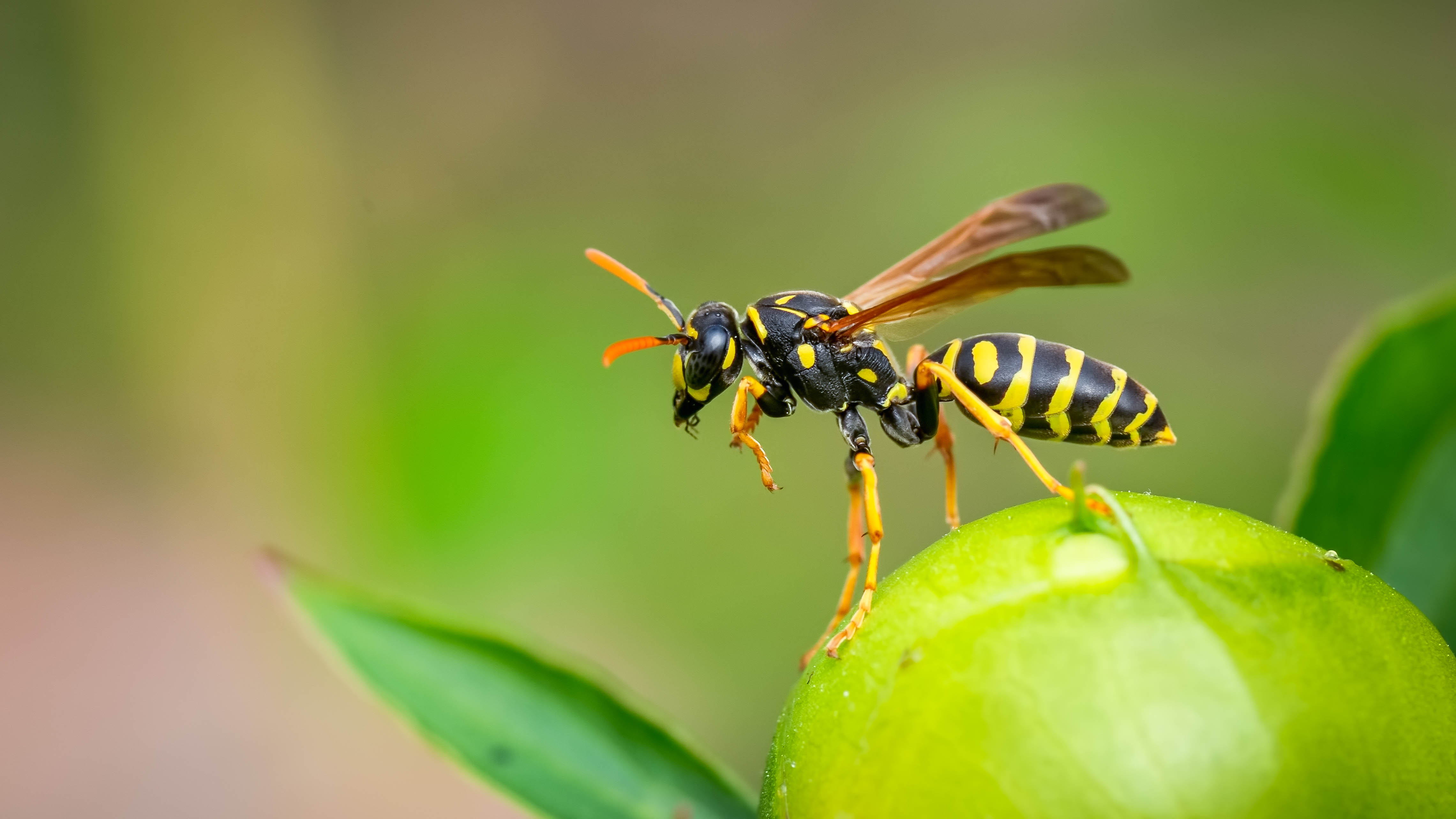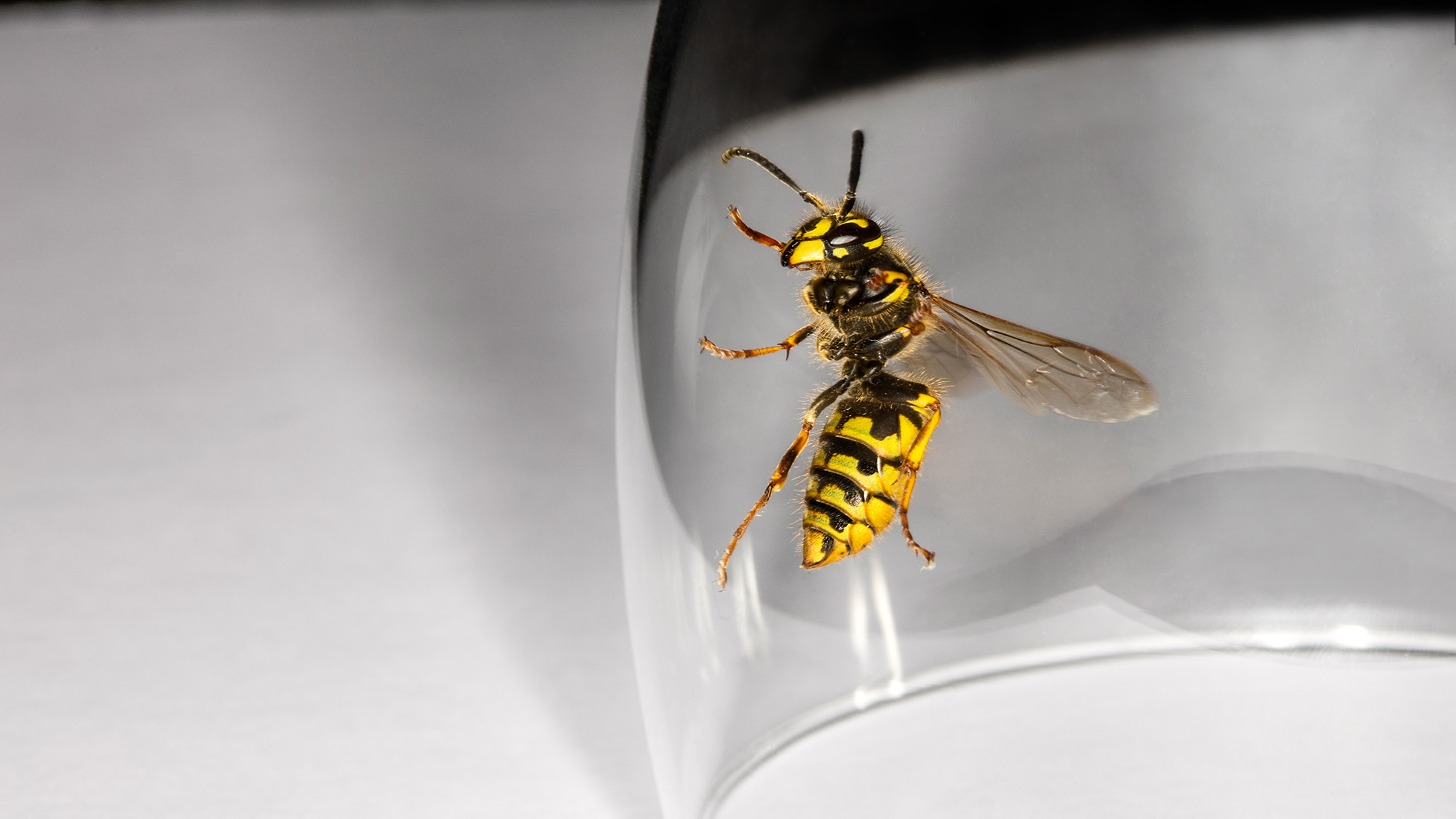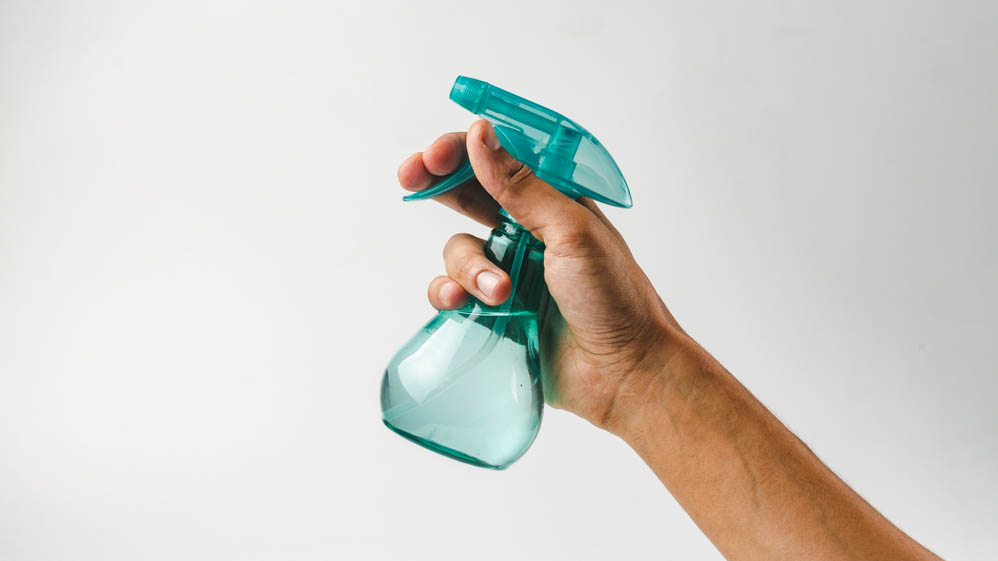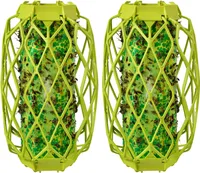You’re handling wasps wrong — here’s what pest experts advise if you find a wasp indoors

In the summer it’s common to open your doors and windows wide to let the fresh air in, but in doing so you could be encouraging a few unwelcome guests. Wasps are one pest I prefer to keep out, and in the event they do invade my home I don’t want them hanging around for long.
While it’s tempting to grab a fly swatter to rid them goodbye for good, it’s not the safest approach and could lead you to realise you’ve made a big mistake if you get stung.
So, rather than causing yourself and the wasp to get hot under the collar, as you commence into battle, pest experts advice taking this approach instead.
The VisiLure TrapStik is able to lure wasps, bees and mud daubers without the use of harmful odors, chemicals, or wasp sprays. Designed with Unique Glue Guards, this creates a barrier around the sticky trap surface.
How to get rid of a wasp indoors
Wasps can be frightening as they swarm around, but try not to lose your cool. Loud noise and flapping arms are more likely to send them into a frenzy, meaning you're more likely to end up as the loser with a sting.
Attempting to swat them can also increase your chance of getting stung, so banish the fly swat for a calmer approach. Flick Pest Control says, “Wasps are agile and difficult to hit. A missed attempt can escalate aggression.”
Another reason to avoid swatting wasps is that, once threatened, they release pheromones that attract others to the area. Tony King, pest control expert and owner of The Pied Piper, explains, “When a wasp is injured or killed, it releases an alarm pheromone that is essentially a chemical 'SOS' which summons other nearby wasps to come in and defend the area. This can potentially turn one wasp into a swarm in a split second and increases your likelihood of being stung multiple times.”
And King adds, “Instead of reacting impulsively, the goal has to be to remove them strategically and in a calm manner.”
Get instant access to breaking news, the hottest reviews, great deals and helpful tips.
Take a calm approach
If your doors and windows are closed, open them as wide as they will go, to encourage them to find a getaway. But after 20 minutes or so, if the wasp still remains indoors, try the next method.
Trap and release the wasp

Flick Pest Control recommends waiting for the wasp to settle on a surface, before covering it with a glass or jar. Then, once the wasp is safely inside, slide a stiff piece of paper or cardboard underneath. Now, carry the trapped wasp outdoors and release it at a safe distance from your home.
Use a mild soap and water spray

Another natural method is to use a simple, mild soap and water spray. Flick Pest Control recommends mixing a few drops of dish soap with water before spraying it lightly on the wasp. And it says, “The soap interferes with its ability to fly, making it easier to remove.”
How to prevent wasps from getting inside
“If wasps are inside your house, it means there is outside access,” says Trent Frazer, lead entomologist at Aptive Pest Control. “If you see a wasp flying around inside, it likely found its way in through an open door or window. If you see individual wasps inside more than once over a few days or weeks, there’s likely a nest built outside near a point of entry.”
Frazer says the point of entry is likely a window screen with holes, a crack or hole in the caulking around doors or windows, a worn weather seal under the door, or an entry through your attic.
Wasps are also attracted to accessible food and sweet scents, so to prevent making your property more attractive, King suggests keeping trash cans closed, pet food inside, and beverages covered while enjoying the outdoors.
And he adds, “Eliminating standing water sources, such as birdbaths or clogged gutters, can also reduce attraction because wasps need water for cooling and nest building.”
Frazer also advises regularly checking for small openings or cracks where other insects may enter, as wasps prey on insects like spiders and even small caterpillars. And if the problem persists, keep doors and windows sealed and consider using screens for added protection.
Follow Tom's Guide on Google News to get our up-to-date news, how-tos, and reviews in your feeds. Make sure to click the Follow button.
More from Tom's Guide
- 5 household items that are causing fruit flies to invade your home — and how to get rid of them
- 7 natural ways to get rid of ants without chemicals
- Pest experts warn you should never squash ants in your home — here’s why

Camilla is the Homes Staff Writer and covers everything to do with homes and gardens. She has a wealth of editorial experience, mounting over 30 years, and covers news and features, tests products for reviews and compiles buying guides.
Her work has appeared in business and consumer titles, including Ideal Home, Real Homes, House Beautiful, Homebuilding & Renovation, and Kitchen & Bathroom Business. She’s even appeared on the cover of Your Home, writing about her own house renovation.
Although she’s obsessed with decorating her home, she also enjoys baking and trying out the latest kitchen appliances. But when she’s not inside, you’ll find her pottering about in her yard, tending to her vegetable patch or taking in her prized hydrangeas.
You must confirm your public display name before commenting
Please logout and then login again, you will then be prompted to enter your display name.

